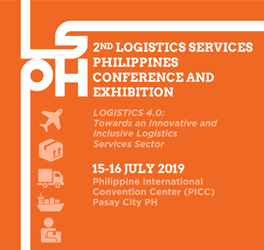 The Department of Tourism recognizes the importance of developing domestic airports in improving competitiveness and enhancing sustainable growth both in tourism and trade. It is also highlighted that the airports are not just gateways but more of economic growth drivers. This objective is included in the National Tourism Development Plan (NTDP).
The Department of Tourism recognizes the importance of developing domestic airports in improving competitiveness and enhancing sustainable growth both in tourism and trade. It is also highlighted that the airports are not just gateways but more of economic growth drivers. This objective is included in the National Tourism Development Plan (NTDP).
 During the 4th Annual Philippine Airport Modernization and Expansion Summit, DOT Undersecretary Arturo Boncato, Jr. shared that the tourism sector generated more than 5 million employment and 12.2% contribution to GDP in 2017. Initial data shows that there are about $ 8 billion income generated from tourist arrivals in 2018.
During the 4th Annual Philippine Airport Modernization and Expansion Summit, DOT Undersecretary Arturo Boncato, Jr. shared that the tourism sector generated more than 5 million employment and 12.2% contribution to GDP in 2017. Initial data shows that there are about $ 8 billion income generated from tourist arrivals in 2018.
The development of secondary gateways and provincial airports is one of the advocacies of the Export Development Council. By doing so, congestion in the capital, especially in the immediate and medium term, will be reduced, which in turn will mean lower travel cost for passengers.
To date, there are only 19 night-rated airports in the country. According to the Civil Aviation Authority of the Philippines (CAAP), the additional airports with Airfield Lighting System (ALS) are the following: Bohol/ Panglao Principal Airport, Subic Bay International Airport, Tuguegarao Principal Airport, and Naga Principal Airport.
The airports to be provided with ALS this year (2019) and currently being processed are the following: Cotabato Principal Airport, Cauayan Principal Airport, Dipolog Principal Airport and Pagadian Principal Airport.
The other recommendations for the domestic airport development are: (1) Modernizing the infrastructure and facilities of the domestic airports to accommodate direct flights to the major gateway of the Philippines, (2) Funding prioritization for the upgrading of domestic airports to provided night-landing and all-weather facilities for a more efficient operation and to emphasize safety improvements to meet International Civil Aviation Organization Standards And Recommended Practices (ICAO SARPS), (3) Development of airports through Public-Private Partnership, and (4) Development of a coherent long-term investment plan for the airports.
CAAP assured of its continuous work to make more airports in the country night-rated. Equipping airports with night-rated capabilities will enable these facilities to serve more passengers. MJAA
 A Joint Memorandum Circular (JMC) was issued to prompt local government units (LGUs) not to impose fees and taxes relative to the transport of goods and products. It is a tripartite effort by the Anti-Red Tape Authority (ARTA), with the Department of the Interior and Local Government-Bureau of Local Government Supervision (DILG-BLGS), and Department of Finance-Bureau of Local Government Finance (DOF-BLGF).
A Joint Memorandum Circular (JMC) was issued to prompt local government units (LGUs) not to impose fees and taxes relative to the transport of goods and products. It is a tripartite effort by the Anti-Red Tape Authority (ARTA), with the Department of the Interior and Local Government-Bureau of Local Government Supervision (DILG-BLGS), and Department of Finance-Bureau of Local Government Finance (DOF-BLGF).
 The bill amending the Public Service Act is aimed to be passed within the remaining term of the Duterte Administration.
The bill amending the Public Service Act is aimed to be passed within the remaining term of the Duterte Administration.
 The Department of Transportation (DOTr) creates an office against unreasonable charges to be known as the Shippers’ Protection Office (SPO).
The Department of Transportation (DOTr) creates an office against unreasonable charges to be known as the Shippers’ Protection Office (SPO).

 During his Government Address on The Roads and Traffic Expo, Chairman Danilo Lim of Metro Manila Development Authority (MMDA) talked about the importance of transportation as one of the key sector in our fast growing economy.
During his Government Address on The Roads and Traffic Expo, Chairman Danilo Lim of Metro Manila Development Authority (MMDA) talked about the importance of transportation as one of the key sector in our fast growing economy. The President of Multimodal and Logistics Association Inc. (PMTLAI) Ms. Marilyn C. Alberto, reported during the 2nd Logistics Services Philippines Conference and Exhibition (LSPH) that the issuance of the Joint Administrative Order (JAO) which focuses to address the problems on high shipping cost and port congestion will be the “long term solutions to the problems that affects the logistics services ability to enable business competitiveness.”
The President of Multimodal and Logistics Association Inc. (PMTLAI) Ms. Marilyn C. Alberto, reported during the 2nd Logistics Services Philippines Conference and Exhibition (LSPH) that the issuance of the Joint Administrative Order (JAO) which focuses to address the problems on high shipping cost and port congestion will be the “long term solutions to the problems that affects the logistics services ability to enable business competitiveness.” In a recent pronouncement, DTI Secretary Ramon Lopez stated that the Departments of Trade and Industry, Transportation and Finance will issue the Joint Administrative Order (JAO) that will regulate local charges imposed by international shipping lines.
In a recent pronouncement, DTI Secretary Ramon Lopez stated that the Departments of Trade and Industry, Transportation and Finance will issue the Joint Administrative Order (JAO) that will regulate local charges imposed by international shipping lines. The Department of Tourism recognizes the importance of developing domestic airports in improving competitiveness and enhancing sustainable growth both in tourism and trade. It is also highlighted that the airports are not just gateways but more of economic growth drivers. This objective is included in the National Tourism Development Plan (NTDP).
The Department of Tourism recognizes the importance of developing domestic airports in improving competitiveness and enhancing sustainable growth both in tourism and trade. It is also highlighted that the airports are not just gateways but more of economic growth drivers. This objective is included in the National Tourism Development Plan (NTDP).